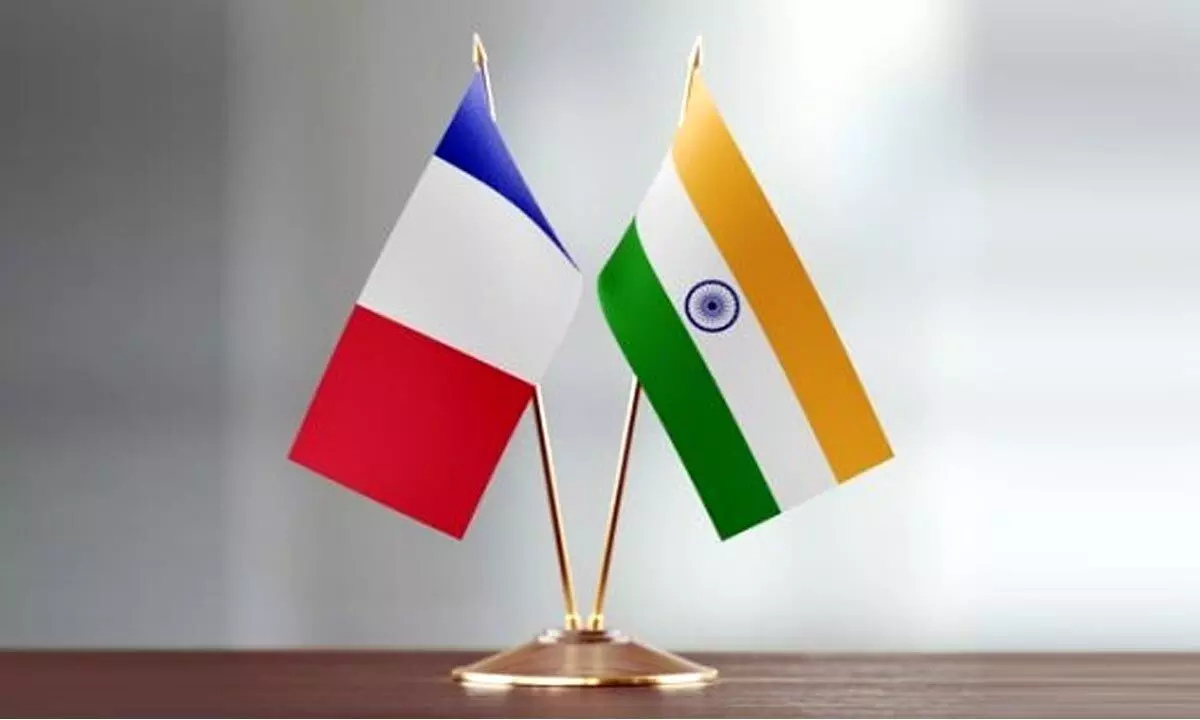Live
- Man booked for objectionable posts on Hindu deities in Karnataka
- 'Own interpretation developed': SC trashes pleas challenging insertion of 'Socialist', 'Secular' in Preamble to Constitution
- Gurugram: Three including two women held in murder case
- Afghanistan: Six killed as vehicle falls into river in Badakhshan
- Complete failure in handling the situation: Congress on Sambhal violence
- Crucial UN plastics treaty talks begin in South Korea
- Delhi govt re-launched senior citizen pension scheme despite challenges: Bharadwaj
- PKL Season 11: We're determined to push for top spot in standings, says Puneri Paltan coach BC Ramesh
- Awareness Program on the Harmful Effects of Tobacco Products
- Bihar Assembly's winter session begins, three newly elected MLAs take oath
Just In
India, France may co-develop, co-produce combat aircraft engines


India, France may co-develop, co-produce combat aircraft engines
India and its trusted strategic partner France may usher in a new era in defence partnership that could boost the military industrial complex in India through co-development and co-production. This complex could bring in a new age of defence exports to third countries.
New Delhi: India and its trusted strategic partner France may usher in a new era in defence partnership that could boost the military industrial complex in India through co-development and co-production. This complex could bring in a new age of defence exports to third countries.
It is believed that the French government has given a nod to defence major Safran to jointly design, develop, test, manufacture and finally certify an engine that will power India’s twin engine Advanced Multi-role Combat Aircraft (AMCA) and the twin engine deck-based fighter for Indian aircraft carriers.
Sources have confirmed the Hindustan Times that the 100 per cent transfer of technology offered by the French Safran is free from US International Trade in Arms Regulation (ITAR) and the proposed 110 kilo newton engine will be fully 'Made in India'.
DRDO chief Dr Samir V Kamat paid a special visit to the Safran engine factory and the R&D centre near Paris on the sidelines of the recently concluded 2023 Paris Air Show. The engine proposal has been under discussion under the defence minister and NSA-led strategic dialogue with France, the newspaper reported.
Prime Minister Narendra Modi will be visiting France on July 13 and he will take part in the Bastille Day Parade on July 14 as the Guest of Honour.
He is expected to hold bilateral talks with President Macron on July 13. The Indian Air force’s Rafale fighter will be participating in the Bastille Day fly-past on July 14.
The year 2023 marks 25 years of the Indo-French Strategic Partnership. Launched by France and India on January 26, 1998, on the occasion of President Jacques Chirac’s visit to India, it embodies the will of both nations to develop their respective strategic independence by drawing on concrete bilateral cooperation in order to maintain peace and global security.
According to reports, the French offers include a completely new engine, new materials, new architecture, with full supply chains, and ancillary manufacturing based in India. Besides, the offer also includes Safran setting up a centre of excellence in gas turbine technology in India with full design and metallurgical precision software tools.
The French offer is synchronised with Safran’s facility coming up in Hyderabad to maintain repair and overhaul (MRO) LEAP engines for the A320 and Boeing 737 aircraft. The French company is already working on a 125 KN engine for the next-generation fighter jet.
According to the reports, the cost of the jet engine contract is set to be very competitive per engine in US dollars. It is said that it will take 10 years from the date of signing for the entire process to be completed, from designing to certifying the constructed engine. Reportedly, a centre of excellence in gas turbine technology with comprehensive design and metallurgical precision software tools will also be established by Safran in India as part of the offer.
The Kaveri jet engine has been out of reach for the DRDO since 1996 because of problems with metallurgical equipment, rotating components, single crystal blade technology, and the high-pressure engine core.

© 2024 Hyderabad Media House Limited/The Hans India. All rights reserved. Powered by hocalwire.com






